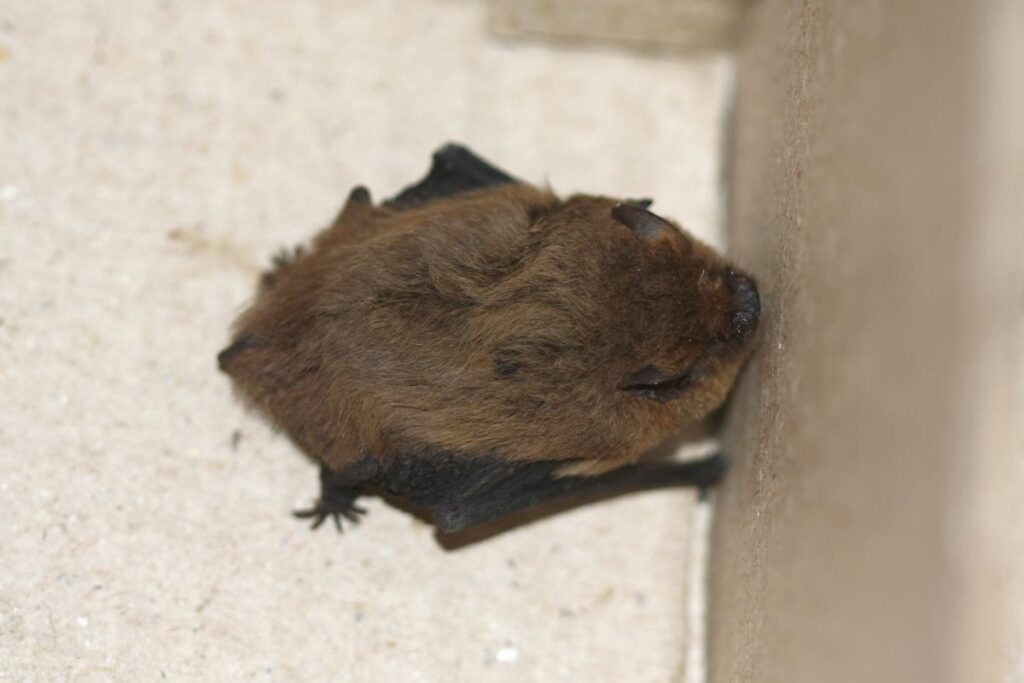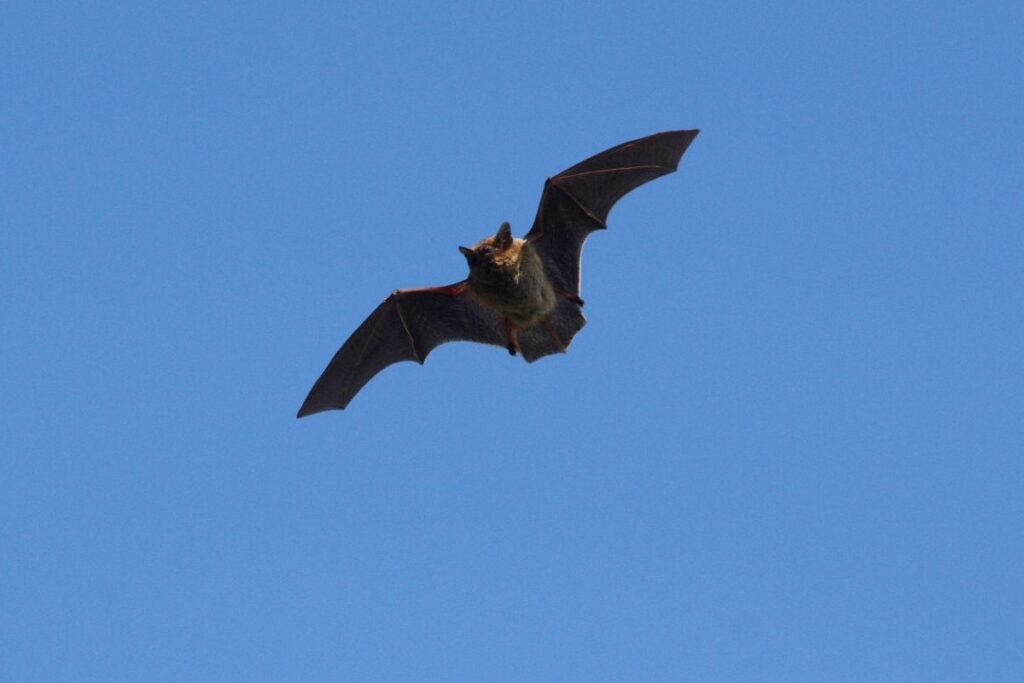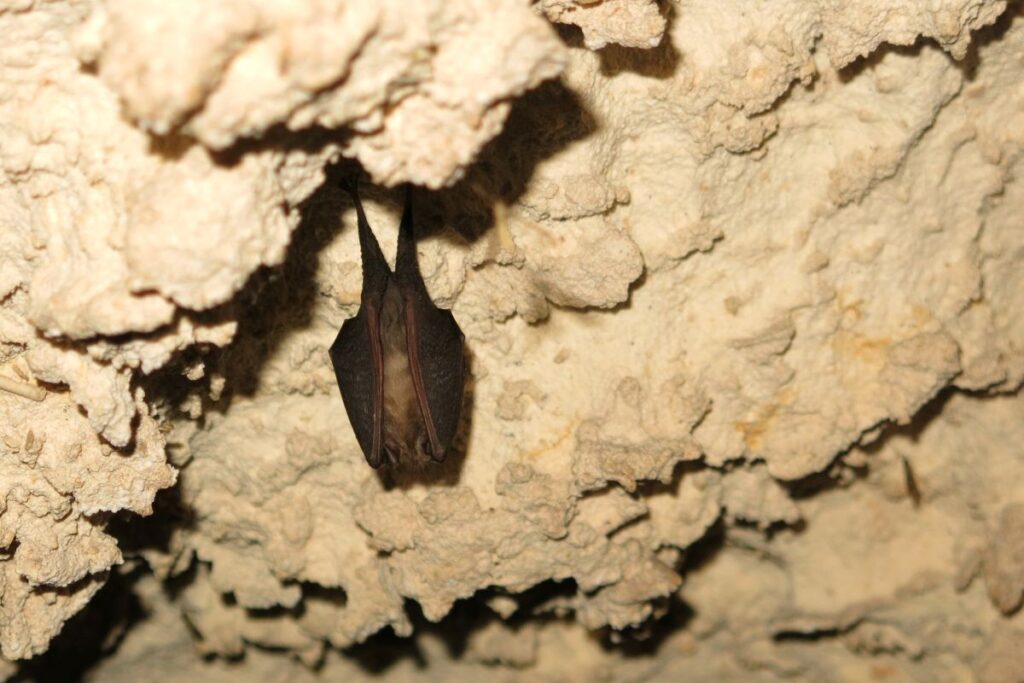Witches’ medium, demons in disguise, harbingers of death, carriers of evil spirits … bats have been maligned throughout our history. Their nocturnal habits, secretive haunts, and strange looks have fuelled superstition across centuries and cultures. Here, we set the record straight on these supersonic furballs.

Myth 1: ”As blind as a bat”
Bats do have eyes, and while our night-flying friends don’t have 20-20 vision, they actually have pretty decent eyesight. In low light, they are much less likley to crash into a wall than humans are, having more light-catching sensors in their eyes than we do. But what about detail?
Like all successfully evolved animals, bats have developed their own way of navigating challenges. Since bats have opted for night-life, being able to find fast-flying food in the dark is essential for survival.
Enter echolocation: bats emit ultrasonic clicks that hit objects in their path and return as echoes, allowing bats to locate their prey with olympian skill. The high pitch makes the sound beam laser-accurate, while their large ears catch the echo rather like a radar would.

Because bats rely more on highly evolved hearing for high precision hunting than on sight for general mapping, they developed the typically tiny eyes that fuelled the blind-as-a-bat myth.
Myth 2: “Bats get tangled in your hair”
Bats have no interest whatsoever in people’s hair. Being such aeronautic acrobats, they can swoop low to snap up insects that sometimes gather above our heads.
This uncanny closeness, often repeatedly, as the bat decimates a cloud of encircling mosquitoes, may give the impression that the bat is coming for you. With skills that can target a mosquito, they are more than adequately equipped to avoid the shock of hair on our heads.
Myth 3: “Bats are dirty and carry diseases”
Disease exists all around us. Many animals that live alongside us can actually carry diseases. But diseases don’t just jump from animals to humans. Disease spillover between species actually requires a very specific chain of events.
Catching a disease from the bats that live in our urban spaces is about as likely as catching the flu from a sparrow on your roof. Far from being dirty, bats are fastidiously clean, grooming their fur and wings just like cats do, even indulging in social grooming as they hang and huddle together in caves.

Myth 4: “Bats are ugly”
Bats’ unusual features coupled with their nocturnal habit and shadowy roosts have long stirred our primeval fear of the dark. Coupled with pop culture’s exaggeration of features like fangs and claws, our association of bats with “creepy” became an entrenched and hard-to-shift myth.
Change the narrative and open your mind to the evolutionary marvel that gives the bat a convoluted nose. Those ‘extra’ folds are evolutionary perfections that guide echolation squeaks to a near-infallible lock on target.
Let those iconic naked wings remind you that like us, bats are mammals, yet they have mastered flight while we remain bound by gravity and our heavy bodies.
Fiction to fact
There are a couple of very good reasons why we should be recognising bat-myths for what they are. Bats are messengers of the health of our environment. Their universal decline is signalling the dire state of insect populations as a consequence of climate change.
Locally, every field or garden that falls to the bulldozer’s advance is one insect-hunting ground less and a further push away from the beneficial coexistence we could enjoy with them.
Simply knowing about the bats that live among us could save us from losing these icons of echolocation. But how do you forge a relationship with creatures that gear up as we wind down? The answer is in that magical switchover time.
Family friends

In Malta there are seven confirmed bat species, some of which roost in caves, while others sleep in unplastered cracks in urban buildings. An hour before sunset, many urban bats slip out of their cracks and start foraging for insects around our homes before flying off to more rural areas.
Get in the habit of looking around lamplights in quieter streets, especially in village cores where houses of character and gardens provide the prefect des-res for bats. Notice the flittery shadows chasing moths.
You may even have a bat roosting in your home, somewhere near the roof, in an overhang, crack or even behind a lamplight. Make it a family friend and introduce a sweet routine in your children’s life: keep a daily lookout and note the time it flies out. What better way to learn about seasons’ changing daylight times?
When you next see these “serrated wings against the sky”, as D. H. Lawrence portrayed them, challenge your prejudices. Remember that while you sleep, a single pipistrelle bat could be zeroing in on insects around your bedroom, catching up to 2000 mosquitoes in just one night.
Desirée Falzon is a naturalist, field teacher with BirdLife Malta and The Education Directorate, and a researcher.










